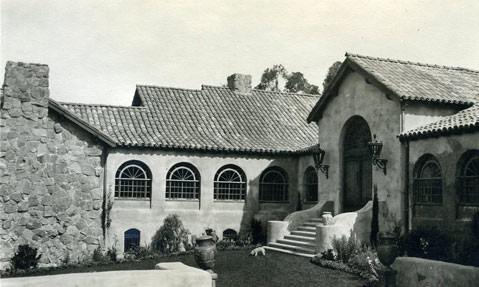Brooks Institute
Legendary Photography School Founded in 1945

Brooks Institute of Photography was founded in 1945 by Ernest H. Brooks. He had a vision of a different type of training ground for budding photography professionals, one that would meet the demands of a rapidly changing field.
Brooks was born in Arroyo Grande in 1909, but the family soon moved to Lompoc, where he spent his childhood. His interest in photography began at a young age when he discovered some old photography equipment in a trunk of his mother’s. After some instruction from her, he was soon out taking snapshots of his schoolmates and charging them for the photos. Early on, his love of photography was matched with a sharp business sense.
After studying and working for a time in the Los Angeles area, Brooks returned to Lompoc to open a photo studio and to work for the Burpee Seed Company, where he became a pioneer in the use of color images for the company’s catalogs. During World War II, he served the army air force as a procurement officer. He also developed a training program for bomber gunners in which he had them use cameras to “shoot” fighter planes and the filmed results could then be evaluated.
On October 17, 1945, his birthday, Brooks opened his school in an upstairs office at 903 State Street. The first 12 students were all returning veterans. Brooks felt that the discipline of photography was becoming ever more specialized and technical with an increasing rapidity of change in the field. He established a system where students were taught by specialists, emphasizing hands-on experience and individual initiative. The curriculum was not limited to just photography; students took economics, public speaking, and business management — courses designed to aid graduates in launching and maintaining successful careers.
This vision met with an enthusiastic response. Under the impact of the GI Bill, which helped veterans attend college, enrollment swelled to some 200 in only two years, and Brooks had to rent more space downtown. Then in 1952, he purchased the former David Gray estate on Alston Road in Montecito for $61,000. Year by year, more courses were added: portraiture, underwater photography, film, photojournalism, and computer graphics, to name just a few. Many graduates went on to highly successful careers; one won a Pulitzer Prize, and another worked on the highly acclaimed television series M*A*S*H. The school continued to expand, buying property at 2020 Alameda Padre Serra in 1965 (later sold) and in 1976 purchasing the former Jefferson School, slated for demolition, also on APS.
Brooks served as school president until 1971, when he became board chairperson. He liked to share with students aphorisms that showed his philosophy of life. “A man with a lot of push needs no pull.” “A man never stays down if he has any get-up about him.” He yielded the presidency to his son, Ernest Brooks II, who certainly in many ways was a chip off the old block; he was one year younger than his father had been when he, too, sold snapshot portraits to his friends.
Ernest H. Brooks died in 1990, but his vision, the embodiment of which will celebrate its 67th anniversary later this year, lives on.



